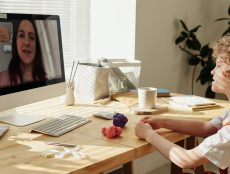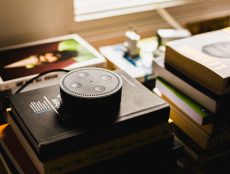
Articles
What Parents Need to Know About Blended Learning’s Impact
By Cait Etherington
October 22, 2017
While virtual K-12 schools may not be widespread yet and may never become the norm, blended learning is already widespread and likely here to stay. However, as blended learning, which includes the use of online learning systems and virtual strategies (e.g., the flipped classroom), expands, parents now face new challenges on the homework front. So, how can parents support their children as the classroom increasingly merges with the family home thanks to blended learning’s impact?
What is Blended Learning?
 By definition, blended learning is any formal education program where a student learns online at least some of the time. If your child watches a math video at home and then does a related lesson in class the following day, they are engaging in blended learning. If your child has to complete an online assignment or collaborate with peers on Google docs to complete a project, they are engaging in blended learning. In short, with blended learning’s impact, students are still attending a brick and mortar school but they are augmenting this experience with robust online activities.
By definition, blended learning is any formal education program where a student learns online at least some of the time. If your child watches a math video at home and then does a related lesson in class the following day, they are engaging in blended learning. If your child has to complete an online assignment or collaborate with peers on Google docs to complete a project, they are engaging in blended learning. In short, with blended learning’s impact, students are still attending a brick and mortar school but they are augmenting this experience with robust online activities.
How Parents Can Support the Move
 There are several key ways in which parents are support the move to blended learning. First, parents need to accept the fact that in a blended learning model, technologies are not necessarily a distraction. They are a learning tool and one that your child now needs to access. Second, in blended learning situations, teachers are curators and facilitators more than conveyers of information. Third, with blended learning, you now have a bird’s eye view of your child’s classroom and school. Use this new perspective to become more actively involved in your child’s learning process.
There are several key ways in which parents are support the move to blended learning. First, parents need to accept the fact that in a blended learning model, technologies are not necessarily a distraction. They are a learning tool and one that your child now needs to access. Second, in blended learning situations, teachers are curators and facilitators more than conveyers of information. Third, with blended learning, you now have a bird’s eye view of your child’s classroom and school. Use this new perspective to become more actively involved in your child’s learning process.
Investing in Technology to Amplify Blended Learning’s Impact
Twenty years ago, many families had only one computer, often a desk top set up in a common area of the home. A decade ago, it became commonplace for families, at least middle class families, to have more than one computer but perhaps not one per family member. Now the tech landscape is changing, largely due to the demands being placed on parents due to the spread of blended learning initiatives.
Take, for example, a household with a middle school student and high school student. On average, over the course of any school night, one should expect their middle schooler to watch at least one math or science video to prepare for an in-class activity the following day. A middle school student may also need to spend one or more hours online working on assignments using a shared platform, such as Google Docs. If you have a high school student, it is likely that they will need to be online to complete even a higher percentage of their homework, since their teachers are likely using some online platform and in many high schools, teachers all use different platforms (e.g., a while an English teacher may post things on Pupil Path, a Chemistry teacher may opt for a subject-specific platform). So, how many devices do you need in your home to make the most of blended learning’s impact?

As a rule of thumb, by the time your children are in middle school, you can expect them to require access to a computer on a regular basis to complete their homework. Notably, don’t think a phone or tablet will suffice. In most cases, they will in fact need access to a computer. Since they are primarily using the computer to access learning management systems, watch videos and produce assignments on shared platforms such as Google Docs and not using the computer to store high volumes of data, a viable and somewhat affordable alternative is to simply purchase a Chromebook or equivalent. Some of these laptops are priced well below $300 per unit yet offer all the functionality needed to support the basis activities associated with most K-12 blended learning requirements.
Still, blended learning’s impact does raise a critical question: Is blended learning creating a new and especially dire digital divide? At least some onlookers believe it is. A 2016 study by the Center for Public Integrity found that while the rich have access to broadband at home, many poor people don’t and even if they do, they many only have mobile devices, which are not always a viable option for homework and related activities.









No Comments